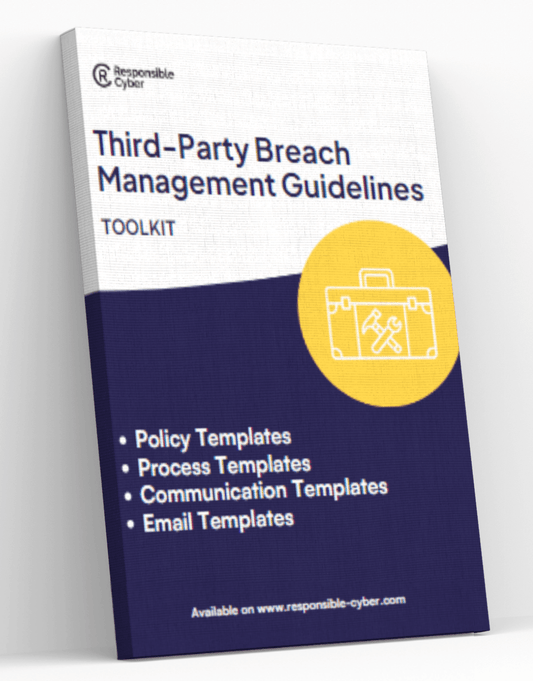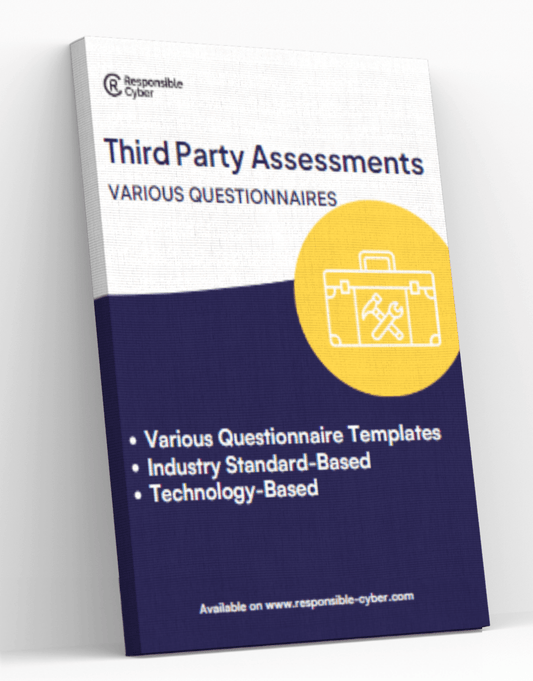Quantum Computing in Cyber Risk Management: Assessing and Mitigating Emerging Threats from Common Third-Parties

Quantum computing is on the verge of transforming many sectors, with cybersecurity being significantly impacted. While quantum computing offers numerous advantages, it also introduces new and emerging threats, particularly concerning third-party vendors and service providers. Organizations must proactively address these threats to protect their digital assets. This article analyzes the role of quantum computing in cyber risk management, highlights emerging threats posed by quantum technology, and provides strategies for assessing and mitigating these risks within organizations, with a focus on common third-party vendors.
Understanding Quantum Computing
What is Quantum Computing?
Quantum computing leverages principles of quantum mechanics to perform computations at unprecedented speeds. Unlike classical computers that use bits (0s and 1s), quantum computers use qubits, which can exist in multiple states simultaneously (superposition) and be entangled with each other, allowing for parallel processing and exponential increases in computational power.
Key Quantum Concepts
- Superposition: Qubits can represent both 0 and 1 simultaneously, enabling parallel computation.
- Entanglement: Entangled qubits share quantum states, meaning the state of one can instantly influence the state of another, regardless of distance.
- Quantum Interference: Quantum algorithms use interference to amplify correct solutions and cancel out incorrect ones.
Common Third-Parties and Quantum-Related Cyber Risks
Types of Common Third-Parties
- Cloud Service Providers
- Software Vendors
- Managed Service Providers (MSPs)
- Supply Chain Partners
- Consultants and Contractors
Quantum-Related Threats from Third-Parties
1. Breaking Traditional Encryption
One of the most significant threats posed by quantum computing is its potential to break traditional encryption methods:
Shor’s Algorithm
Shor’s algorithm can efficiently factorize large numbers and solve discrete logarithms, compromising widely used encryption schemes such as RSA and ECC. This threatens the security of data protected by third-party vendors.
2. Enhanced Cyberattacks
Quantum computing can enhance cybercriminal capabilities, enabling more sophisticated and efficient attacks:
Faster Password Cracking
Quantum computers can utilize Grover’s algorithm to perform brute-force attacks on encryption keys and passwords faster than classical computers, significantly reducing the time needed to crack them.
Advanced Persistent Threats (APTs)
State-sponsored actors and sophisticated cybercriminals can leverage quantum computing for advanced and persistent cyberattacks, targeting third-party vendors and their clients.
3. Vulnerabilities in Quantum Systems
As third-party vendors adopt quantum technologies, new vulnerabilities may emerge within these systems themselves:
Quantum Cryptography Weaknesses
Quantum cryptography, while promising enhanced security, is not immune to all attacks. For example, Quantum Key Distribution (QKD) systems can be vulnerable to side-channel attacks and implementation flaws.
Quantum Supply Chain Risks
The development and deployment of quantum technologies involve complex supply chains, which can introduce additional security risks such as hardware tampering and firmware vulnerabilities.
Assessing Quantum-Related Cyber Risks from Third-Parties
To effectively manage the emerging threats posed by quantum computing, organizations must first assess their quantum-related cyber risks, especially those related to third-party vendors.
1. Conduct a Quantum Risk Assessment
Identify Vulnerable Assets
Determine which assets and systems within your organization and your third-party vendors are most vulnerable to quantum attacks, focusing on those relying on traditional encryption methods.
Evaluate Impact
Assess the potential impact of quantum-related threats on these assets, considering factors such as data sensitivity, regulatory requirements, and business continuity.
Prioritize Risks
Prioritize the identified risks based on their likelihood and potential impact, ensuring that the most critical vulnerabilities are addressed first.
2. Inventory Cryptographic Assets
Maintain an up-to-date inventory of all cryptographic assets used by your organization and third-party vendors, along with their associated encryption methods. This inventory will help identify which systems need transitioning to quantum-resistant encryption.
3. Monitor Quantum Advancements
Stay informed about the latest advancements in quantum computing and post-quantum cryptography. Understanding the current state of quantum technology will help you anticipate and respond to emerging threats more effectively.
Strategies for Mitigating Quantum-Related Cyber Risks from Third-Parties
Once quantum-related cyber risks have been assessed, organizations must implement strategies to mitigate these risks and enhance their overall security posture, focusing on third-party vendors.
1. Transition to Quantum-Resistant Cryptography
The most critical step in mitigating quantum-related cyber risks is transitioning to quantum-resistant cryptographic methods:
Adopt Post-Quantum Cryptography (PQC)
- Lattice-Based Cryptography: Uses the hardness of lattice problems for security. Examples include NTRUEncrypt and Kyber.
- Hash-Based Cryptography: Relies on the security of hash functions. Examples include the Merkle signature scheme and XMSS.
- Code-Based Cryptography: Uses error-correcting codes for encryption. Examples include the McEliece cryptosystem.
- Multivariate Quadratic Equations: Employs systems of multivariate quadratic equations for encryption. Examples include Rainbow and GeMSS.
Implement Hybrid Cryptographic Solutions
During the transition period, consider implementing hybrid cryptographic solutions that combine traditional and quantum-resistant algorithms to ensure security.
2. Enhance Security Protocols and Infrastructure
Updating security protocols and infrastructure is essential for preparing for the quantum era:
Upgrade Hardware and Software
Ensure that your hardware and software, as well as those of your third-party vendors, can support quantum-resistant encryption methods and protocols.
Implement Scalable Solutions
Adopt scalable security solutions that can accommodate future advancements in quantum computing.
3. Strengthen Key Management Practices
Effective key management is crucial for protecting cryptographic assets from quantum threats:
Secure Key Generation
Use secure methods for generating cryptographic keys to ensure their robustness against quantum attacks.
Key Storage and Distribution
Implement secure storage and distribution practices for cryptographic keys to prevent unauthorized access.
Regular Key Rotation
Regularly rotate cryptographic keys to minimize the risk of exposure and enhance security.
4. Foster Collaboration and Continuous Learning
Collaboration and continuous learning are vital for staying ahead of quantum-related cyber threats:
Engage with Industry and Academia
Collaborate with industry experts, academic researchers, and standards organizations to stay informed about the latest developments in quantum computing and cybersecurity.
Participate in Consortiums
Join consortiums and working groups focused on post-quantum cryptography and quantum security to benefit from collective knowledge and research.
5. Build a Quantum-Savvy Workforce
Developing in-house expertise and fostering awareness of quantum computing and its implications for cybersecurity are crucial steps:
Provide Training and Education
Offer training programs on quantum computing and post-quantum cryptography for cybersecurity professionals.
Encourage Research and Innovation
Support research and development initiatives focused on quantum computing and cybersecurity within your organization.
6. Strengthen Third-Party Risk Management
Proactively managing third-party risks is essential in the quantum era:
Conduct Third-Party Security Assessments
Regularly assess the security posture of third-party vendors to ensure they are implementing quantum-resistant measures and adhering to best practices.
Include Quantum-Resistant Requirements in Contracts
Ensure that contracts with third-party vendors include requirements for transitioning to quantum-resistant cryptographic methods and protocols.
Monitor Third-Party Compliance
Continuously monitor third-party compliance with security standards and practices to ensure ongoing protection against quantum-related threats.
Case Studies and Examples
Case Study 1: Financial Institution and Cloud Service Provider
Background: A major financial institution recognized the potential threat posed by quantum computing to its secure transactions and customer data, particularly those managed by a cloud service provider.
Implementation: The institution conducted a comprehensive risk assessment, identified vulnerable assets, and developed a quantum readiness roadmap. They worked closely with their cloud service provider to invest in lattice-based cryptography and implement hybrid cryptographic solutions.
Results:
- Enhanced Security: The transition to quantum-resistant encryption methods ensured the protection of sensitive financial data.
- Operational Resilience: A smooth transition to quantum-resistant methods ensured that business operations remained uninterrupted.
- Vendor Collaboration: Close collaboration with the cloud service provider strengthened the overall cybersecurity posture.
Case Study 2: Government Agency and Software Vendor
Background: A government agency responsible for national security needed to protect classified information from potential quantum threats, particularly from vulnerabilities introduced by software vendors.
Implementation: The agency adopted a hybrid cryptographic approach, combining traditional encryption methods with quantum-resistant algorithms, and provided extensive training for its cybersecurity workforce. They also required their software vendors to adhere to quantum-resistant standards.
Results:
- Secure Communication: The hybrid approach ensured the confidentiality and integrity of classified communications.
- Skilled Workforce: Training programs built a knowledgeable workforce capable of addressing the challenges posed by quantum computing.
- Vendor Compliance: Requiring software vendors to implement quantum-resistant measures enhanced overall security.
Case Study 3: Healthcare Provider and Managed Service Provider (MSP)
Background: A healthcare provider needed to secure patient data and comply with stringent regulatory requirements in the face of the quantum threat, especially those managed by an MSP.
Implementation: The provider upgraded its infrastructure to support quantum-resistant encryption, implemented secure key management practices, and engaged with industry experts to stay informed about post-quantum developments. They worked with their MSP to ensure compliance with quantum-resistant standards.
Results:
- Data Protection: The adoption of post-quantum cryptography ensured the protection of sensitive patient data against future quantum attacks.
- Regulatory Compliance: The provider maintained compliance with healthcare regulations and enhanced patient trust.
- MSP Collaboration: Working closely with the MSP ensured that all managed systems adhered to quantum-resistant standards.
Conclusion
Quantum computing is set to transform the landscape of cybersecurity, introducing both significant opportunities and emerging threats, particularly concerning third-party vendors and service providers. To effectively manage these quantum-related cyber risks, organizations must assess their vulnerabilities, invest in quantum-resistant cryptographic techniques, update security protocols, and foster a culture of continuous learning and collaboration. By taking proactive steps to prepare for the quantum era, businesses and institutions can future-proof their cybersecurity strategies, ensuring the protection of their digital assets and resilience against the evolving landscape of cyber threats. Embrace these best practices to safeguard your organization in the face of the quantum revolution, particularly in managing third-party risks.
Check out more related articles:







